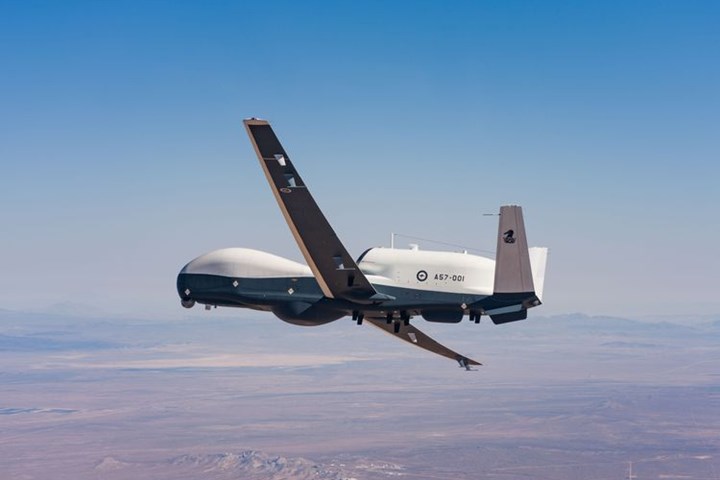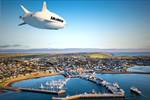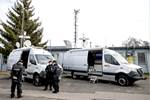Northrop Grumman MQ-4C Triton achieves successful first flight in Australia
Multi-intelligence uncrewed aircraft enhancing Australia’s maritime surveillance.

Photo Credit: Northrop Grumman
Northrop Grumman Corp. (Palmdale, Calif., U.S.) has achieved a significant breakthrough with the successful completion of the inaugural flight for Australia’s multi-intelligence MQ-4C Triton uncrewed aircraft. This milestone flight occurred on Nov. 9 at the Palmdale Aircraft Integration Center in California as Northrop Grumman advances toward the delivery of Australia’s first Triton in 2024.
Designed for deployment by the U.S. Navy and Royal Australian Air Force, the MQ-4C Triton is an uncrewed, high-altitude, long-endurance aircraft dedicated to persistent maritime intelligence, surveillance, reconnaissance and targeting. According to , the MQ-4C Triton has an aluminum fuselage, while its V-tail, engine nacelle and aft fuselage are made of composite materials.
Taking off at 11:56 a.m. PST, the maiden flight lasted approximately 6 hours and 24 minutes, encompassing crucial airworthiness evaluations, including engine, flight control and fuel system checks, as well as fundamental aircraft handling tests.
In a recent announcement by the Australian government, the addition of a fourth aircraft to their fleet further bolsters resilience and amplifies superior surveillance capability, ensuring continuous monitoring and safeguarding of Australia’s maritime interests around the clock.
Air Marshal Robert Chipman, chief of the Royal Australian Air Force, highlights Triton’s pivotal role, stating, “Triton expands Australia’s intelligence, surveillance and reconnaissance capability by providing reliable real-time intelligence and situational awareness. Persistent surveillance enables better planning, greatly enhancing joint military responses and operations.”
The MQ-4C Triton uncrewed aerial system achieved the U.S. Navy’s declaration of initial operating capability (IOC) on Aug. 3, 2023.
Australia’s involvement in the Triton cooperative program has been instrumental in shaping its system requirements. Collaboration between U.S. and Australian defense forces will enable the sharing of data collected by their respective Tritons.
Australia faces diverse security challenges, ranging from humanitarian and disaster relief to the monitoring of vital sea lanes in the Indo-Pacific. With all four Australian Tritons progressing according to production schedules, these systems will play a vital role with sensors and communication nodes facilitating data transfer across warfighting domains and various mission needs.
Related Content
-
Scaled Composites Model 437 aircraft to be flown for Beacon autonomy testbed
Northrop Grumman subsidiary part of Digital Pathfinder development of stealth aircraft with wings using continuous carbon fiber additive manufacturing and determinate assembly.
-
The AAMMC Tech Hub: Ramping U.S. production of large thermoplastic composite aerostructures
CW talks with Syensqo, Spirit AeroSystems and other consortia members about current funding, specification of the next world’s largest press, organizational structure and projects to support U.S. companies in the race to deliver >40,000 sustainable and efficient aircraft over the next 20 years.
-
FibreCoat develops radar-absorbing fiber-reinforced composite
Broadband, flexible material offers protection against radiation, heat and electromagnetic interference, and maintains performance across curved surfaces and slanted angles, outperforming existing materials by up to 100 times.






